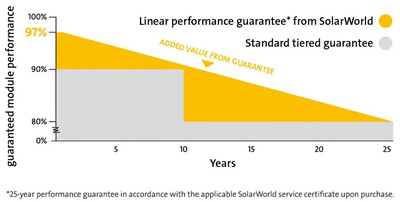SolarCity pushing industry to 40% increase in useful lifetime of solar power installations
 John Fitzgerald Weaver for Electrek: In a new report released by SolarCity, we are seeing that solar power systems have a usable lifetime of at least 35 years – 40% longer than the market expects. The key finding of the report is that power degradation (annual efficiency loss) of solar panels supplied to SolarCity is as much as 35% lower than for a comparable industry-wide selection of non-SolarCity panels, which are typically expected to last for 25 years. SolarCity feels it is the implementation of a stringent and industry-leading “Total Quality Program” that has driven this.
John Fitzgerald Weaver for Electrek: In a new report released by SolarCity, we are seeing that solar power systems have a usable lifetime of at least 35 years – 40% longer than the market expects. The key finding of the report is that power degradation (annual efficiency loss) of solar panels supplied to SolarCity is as much as 35% lower than for a comparable industry-wide selection of non-SolarCity panels, which are typically expected to last for 25 years. SolarCity feels it is the implementation of a stringent and industry-leading “Total Quality Program” that has driven this.
SolarCity is in the unique position of being one of the largest deployers of solar panels – from multiple manufacturers – in the world, and with their tens of thousands of systems connected to a central database they know realtime performance. In the study here, SolarCity looked at greater than 11,000 panels to determine their data points and come to their conclusion that their solar panels are performing well beyond expected industry standards. Cont'd...
Comments (0)
This post does not have any comments. Be the first to leave a comment below.
Featured Product

